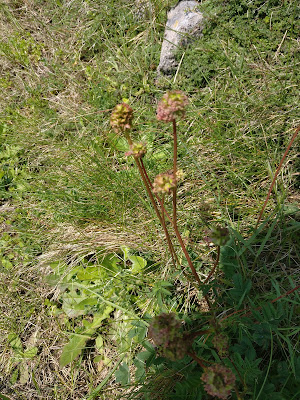This blog may help people explore some of the 'hidden' issues involved in certain media treatments of environmental and scientific issues. Using personal digital images, it's also intended to emphasise seasonal (and other) changes in natural history of the Swansea (South Wales) area. The material should help participants in field-based modules and people generally interested in the natural world. The views are wholly those of the author.
Saturday, 13 May 2023
Seeing the Changes 1788
Lots of first flowerings on the cliff footpath between Bracelet Bay and Langland. Spotted probable Salad burnet (Sanguisarba minor); Sea pea (Lathyrus japonicus); Kidney vetch (Anthyllis vulneraria); Tormentil (Potentilla erecta); White campion (Silene alba); Scarlet pimpernel (Anagallis arvensis); Blue bugle (Ajuga genevensis); Common rock-rose (Helianthemum nummularium); Thrift (Armeria maritima); Columbine (Aquilegia vulgaris) and Red Valerian (Centranthus ruber) with its white variant. Also spotted a Stonechat (Saxicola torquata) in the scrub.
Subscribe to:
Post Comments (Atom)
-
I n the UK and US, a pparently popular and successful vegan/vegetarian restaurants are reportedly closing or adding meat to their menus ( ...
-
Early ripening fruit may seem convenient but some folk think it confirms environmental stress. There's also a possibility th...














%20mating%20NWCW.jpg)


No comments:
Post a Comment